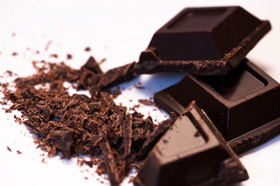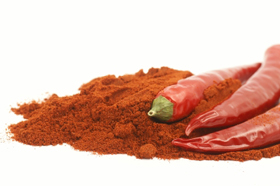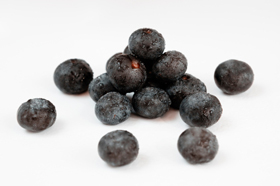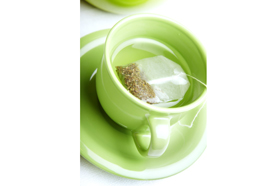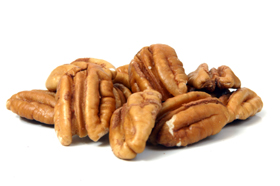Coffee against Breast Cancer

A new research has suggested that the intake of coffee per day may reduce the risk of a sub-type of breast cancer, ER-negative breast cancer, by sixty percent.
Wonder Coffee
There are many talks and written records on how coffee came to be as what we see it now, but there is that strongest and most accepted legend about the discovery and drinking of coffee.
A goat shepherd named Kaldi noticed the strange behavior of his goats that were jumping and running around in excitement and full of energy after eating the fruits of an unknown bush. Kaldi soon found out that those fruits his goats tasted were cherry-like, and tasted the leaves for himself and soon enough, he became full of energy.
Kaldi took those bush’s fruit and branches to a monastery and the Abbot there decided to cook them. However, it turned bitter and the Abbot threw the entire pot into the fire. The cherries then started to burn, and the beans inside produced a pleasant aroma that made the abbot create a drink of the roasted beans. This is how then coffee came to be.
The black liquid in our morning cup is considered to be one of the most popular beverages after water. After petroleum, it is the most traded commodity in the world.
Before we know coffee as a drink, it first originated from coffee cherries which grow along the coffee tree’s branches. It takes a year for these cherries to mature. Inside the cherries are the coffee beans, and the coffee beans are then grinded on its way to become a beverage.
Scientifically, coffee contains a substance called caffeine. Caffeine is absorbed and distributed, particularly to the brain, quickly and is excreted through the urine many hours after consumption. It acts as a stimulant for the central nervous system ad diuretic. It also relieves fatigue and drowsiness for a short while and also treats migraine head aches. However, caffeine does not reduce he effects of alcohol, for many believe that it can ‚Äúsober up‚ÄĚ an intoxicated person. Excessive intake of caffeine can also result to nausea, vomiting, anxiety, depression, tremors, difficulty in sleeping and fast heart rate.
Taking coffee must be regulated, for research suggests coffee being addictive if taken in certain amounts during the day and can cause depression, chronic headaches, deprivation of sleep and increased blood pressure and sugar. However, proper coffee intake will give you as much benefits as you can get.
Coffee can help in prevention and risk reduction of certain diseases such as Alzheimer’s disease and liver diseases. It also reduces the risk of diabetes and skin cancer. No one said that coffee can cure it, but knowing that that delicious drink every morning provides many health benefits gives reassurance. Coffee also contains antioxidants that fight the body’s free radicals. It also increases brain power every morning. It helps in mind concentration in the midst of work. Drinking coffee after a work out can also reduce muscle pains.
The Study
A new study suggests the reduction of risks of certain breast cancer types by 60 per cent through high consumption of coffee daily. Breast cancer can be divided into non-hormone responsive (estrogen receptor (ER) negative) and hormone-responsive (ER positive) subtypes.
Results of the study published at the Breast Cancer Research show that drinking five cups of coffee or more daily could help in reducing the risk of anti-oestrogen-resistant oestrogen-receptor (ER-negative) breast cancer, a breast cancer sub type.
Karolinska Institutet-based team of Swedish researchers found out that women coffee drinkers showed lower breast cancer incidence than those who rarely drank coffee by comparing the lifestyle factors of age-matched women with and without breast cancer.
According to Jingmei Li, the lead researcher, and other researchers, no evidence was found to prove that postmenopausal breast cancer overall risk is heightened by consuming coffee. However, ER-negative breast cancer decrease in postmenopausal women was found with high intake of coffee daily. Modest decrease in the overall risk of breast cancer through coffee consumption was also reported by the researchers.
Looking deeper into the study, Li and her co-workers separated the breast cancer sub types. They have found ‚Äúheavy coffee drinkers‚ÄĚ, who take 5 cups or more a day, to have a notable decrease in ER-negative breast cancer.
The Swedish researchers said that because of coffee’s complex chemical make-up, it becomes a light on the aetiology of breast cancer. Some experimental studies have also shown the potential of these chemicals to alter the risk of cancer through significant biological mechanisms. However, they also added that the stand of the scientific community is divided over that beverage’s toxicity.
In simpler words, Li and her co-workers have found out that the risk for ER-negative breast cancer was significantly decreased compared to ER-positive breast cancer with the help of high consumption of coffee. They also added that future studies should now be gradually performed as to verify the significant benefit of high coffee consumption to breast cancer sub types.
Coffee is a complex mixture of polyphenols and caffeine, and with this, previous experimental studies have suggested that it may play a role both as an agent for chemo-prevention and as a carcinogen.
Association between postmenopausal breast cancer risk and coffee were assessed by the researchers in a large population of 6,000 people.
Breast Cancer Prevention
The way to live a healthy and productive life is to keep the body away from diseases and illnesses. Breast cancer, a type of cancer experienced by women, prevention starts with various factors that can be controlled.
- Controlling alcohol intake is important to prevent breast cancer. If wanting to drink alcohol including beer, wine or liquor, make sure to take no more than one drink per day.
- Breast feeding could also help. The longer time you breast feed, the greater the protection you get.
- Overweight people have higher risks of developing breast cancer, especially if obesity occurs later in life, particularly after menopausal.
- Exposure to environmental pollution could also contribute to breast cancer, though further studies are needed. A link between exposure to polycyclic aromatic hydrocarbons from vehicle exhaust and air pollution and breast cancer was found in some researches.
- Getting plenty of physical activity helps you prevent gaining of weight or reducing it, therefore preventing breast cancer development.
- If you are taking hormone therapy for menopausal symptom, its better to discontinue before you develop breast cancer.
No research has yet shown a direct link of diet to breast cancer prevention. Though there are some studies, only minimal effects are shown. Still, taking a healthy diet would help one reduce risk of other diseases such as cardiovascular diseases and diabetes. In addition, taking a healthy diet helps one maintain healthy weight, a key factor in preventing breast cancer.
Sources
shaka.mistral.co.uk
amolife.com
mayoclinic.com
nutraingredients.com
Posted: June 8th, 2011 under Breast Cancer, Coffee.
Comments: none



